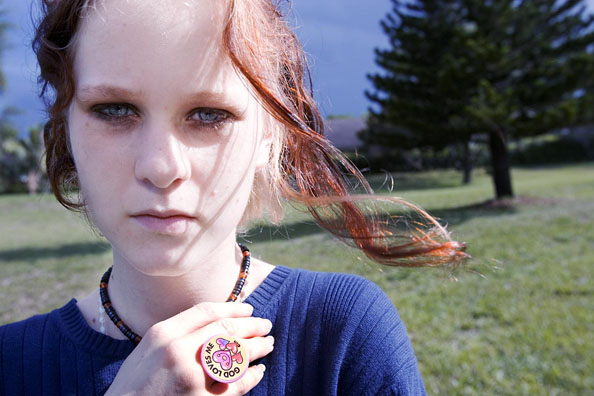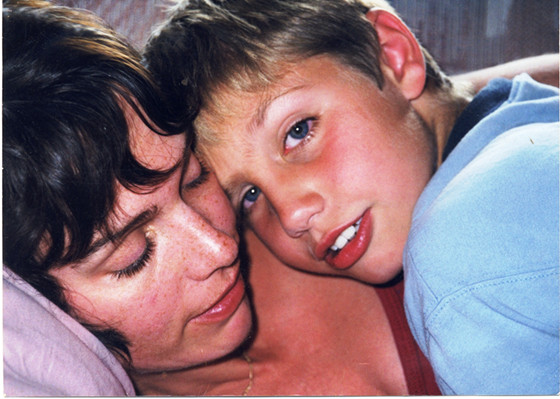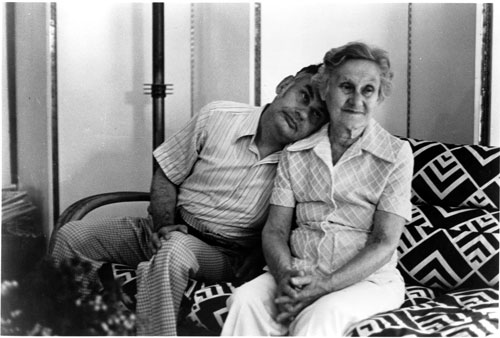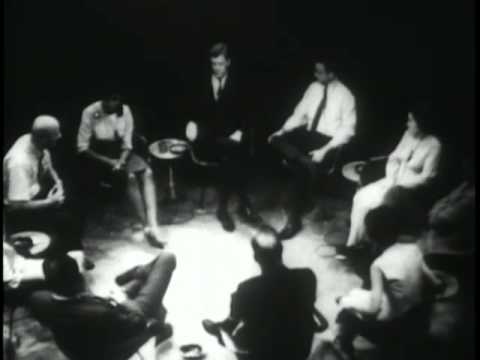
Throughout the history of cinema, documentary films have been a potential record of real and untouched life, and thus filmmakers, perceiving the possibilities these films provided, put them into a major cinematic category.
Documentaries have their specific language and audience; however, they have become an educational and enlightening instrument, broadening its reception in modern society. Documentary films are currently one of the best ways to assimilate both the cinematic aspects and the questions raised, becoming increasingly popular, even in classrooms.
Psychology documentaries provide great examples of problems, conceptions and theoretic principles, based on real human experiences. They compose a remarkable medium for psychology content and indicate an outstanding resource for complex notions that are not simply explained or described.
The documentary films presented here are illustrations of human issues and conflicts, especially concerning stigmatized people in an incomprehensive environment, documented in these films as psychiatric institutions, the patriarchal society, intolerant families and extremist cultures. Their intention is to broaden the audiences mind concerning mental health and social coexistence, for as Isaac Asimov once said, “Your assumptions are your windows on the world. Scrub them off every once in a while, or the light won’t come in.”
1. Stephen Fry: The Secret Life of the Manic Depressive (2006)

Living with mental illness can be a difficult and often dangerous journey; nonetheless, today’s health system presents a campaign fo psychological awareness that attempts to end the intolerance against people suffering from depression and bipolar disorder. British actor Stephen Fry proposes to do a similar job, adding his personal experience as someone with manic depression.
“The Secret Life of a Manic Depressive” is a revelation about the intimate details of the highs and lows of bipolar personalities. Produced in the format of a video-journal, Stephen Fry exposes his struggles (and a suicide attempt after performing a well-known play in the West End) with both mania and depression, as well as raising questions about the role of the disorder in his career and in others’ lives.
Fry does not restrict his critic’s observations over famous cases (e.g. Carrie Fischer), but also over ordinary people suffering from an incomprehensive disease. In the expedition, the actor encounters men and women with whom he sympathizes and discusses the problematic sides of the disorder, the emotional cargo the family has to cope with, the enormous amount of medications, the early diagnosis, and the fear and apprehension from both the manic depressive person and their family.
Stephen Fry produced a delicate and sincere film about the most intimate and terrifying experiences manic depressive people go through, but manages to present them with encouraging and positive perspectives while trying to understand the origins and the different consequences it can have in children, adolescents and adults in Britain and America.
2. Boy Interrupted (2009)

Born to filmmaker parents, Evan’s life was always recorded. At the age of seven, he started acting differently and expressing depressive and suicidal behaviour. It was just the beginning of their arduous journey. Evan Perry comes from a family that holds a record for bipolar disorder and suicide, and producers Dana and Hart Perry (the boy’s parents) explored their similarities and differences cleverly, approaching their fears and worries about the connection Evan and his deceased uncle Scott maintained.
The Perrys organized the documentary in chronological order, which allows the audience to follow Evan’s and their family’s conflicts and also reflect on their decisions and actions, while sharing the touching emotions family and friends are expressing through their interviews.
This documentary does not intent to clarify the origins of the bipolar disorder or explain the suicidal ideation Evan kept his whole (and short) life. It may be described as the pursuit to overcome the misunderstood loss of a beloved person in an artistic and flourishing way while it produces a significant debate about the subject.
Evan Perry was a talented, emotional, affectionate, brilliant and misjudged boy. Through the lens of his parents’ camera, the audience becomes involved with his outstanding personality and problematic mood swings, perceiving also the artistic and intimate side of the young but exceptional child. With these records, Dana and Hart are able to tell Evan’s story, presenting his progression in the “rollercoaster” of life, intensified in his situation.
This inspiring tale exists to present a family’s struggle to make sure their son is loved and cared for and to keep him from taking his own life. It is the realization of the family’s regrets, sorrows, memories, and their attempt to reinterpret their own meaning as a family.
3. Ghosts of Abu Ghraib (2007)

What can happen if a young group of military police exerts unnecessary authority on war prisoners? This is what director Rory Kennedy approachs in the HBO documentary about the Abu Ghraib prison during the war in Iraq. The film revisits the happenings at the prison through interviews from military police who were in charge at the time (from 2003-2004) and from the surviving prisoners.
Kennedy builds a documentary questioning how far human nature is able to go to inflict pain on others and to keep their sanity. The director approximates the Abu Ghraib event to the Milgram’s experiment, in which the psychologist observed that people would torture others without hesitancy if they were receiving orders from a legitimate authority.
This experiment determines what had already happened over centuries of human history and describes that conditions observed in an extreme and aggressive environment, especially in war, are an extension of social maintaining behavior.
Although social psychology offers explanations (of the reasons) for this behavior, the documentary focuses on the humanistic side of the militaries and the prisoners, presenting declarations of great regret from those involved in the tortures. These declarations confirm the incomprehension of this aspect of human nature, for most soldiers interviewed affirmed they did not know why they performed the torture or why they could or would not question their ethical actions.
“Ghosts of Abu Ghraib” tries to acknowledge the features social psychology proposed itself to study: the social interactions and its consequences. It is the recollection of a specific type of interaction that questions normal behavior and will always haunt its agents.
4. Best Boy (1979)

Director Ira Wohl portrays mental illness and its stigmatization in an intimate and beautiful way, focusing on his cousin Phillip “Philly” Wohl’s struggles. Philly is part of the exceptional society, people who suffer from mental handicaps or any impairment in cognition, and spent all his life being overprotected by his family. The problem Ira depicts in the documentary is the constant concern Philly’s parents go through: how is he going to live after they have passed away?
The documentary follows the everyday interaction between Philly and his parents over three years and focuses on Philly’s process of becoming independent. Ira chose to highlight the humanistic aspects about his cousin’s illness, analogous to a development of maturity (some sort of puberty for Philly), in which he goes to school, visits a zoo, and tries to be familiar with those environments, and create a safe place similar to what his parents represent to him.
In the production of the documentary, Ira captured the vital moments that would determine Philly’s future, as a son and as a citizen stigmatized for his illness. The director, therefore, presents not only an intimate and individual experience but also introduces a relevant problem in society: these mentally handicapped people have no support from the state, no laws that prevent them from situations similar to which Philly had gone through.
The grim reality Philly is showing the audience is that mentally handicapped people have to spend a lifetime secured from the real and incomprehensive humanity, and when their caregivers can no longer play their role, these people have to fight on their own to survive a discriminatory system that will not offer the assistance they need. But Philly is actually breaking the paradigms of mental illness and introducing his human and sensible life, for he is, in fact, capable of becoming an independent 52-year-old man living with his difficulties.
5. Journey Into Self (1969)

This documentary feature produced by Bill McGaw presents a group therapy based on the principles of humanistic psychology that was developed prominently from the approaches of Carl Rogers. The documented group therapy session, coordinated by Rogers himself and his lifelong colleague Richard Farson, involved eight unknown and disparate members that would tell the participants personal issues and the group should try to intervene in their self-evaluations, therefore creating new perceptions of the self and the other.
The process presented by the participants of the 16-hour session reveals the ideas defended by humanistic psychology, and specifically Rogers, about a client-centered methodology that reassures self-awareness and mindfulness, prompting different and healthier reactions to situations and relationships. Through humanistic-existential therapy (influenced by phenomenological psychology), people reach a greater understanding of their limitations and potentiality, for the client’s individuality is the main aspect into consideration.
The documentary displays brilliantly this freedom of expression, for the participants are willing to listen to each other’s problems and are open enough to be touched by their personal and intimate questions. This “contact” (a perfectly established interaction between two parts that are affected by each other’s personalities, so that the internal contemplation is influenced in some way that incites a self-reflection, allowing them to grow together), as Fritz Perls defined, is what allows the emotional exchange beautifully observed in this 1968 film.